From classic delicious food items to exciting flavors, Montana offers a bounty of exceptional dishes that are as diverse as its breathtaking landscapes.
Montana’s culinary heritage, rooted in its agricultural past, showcases the essence of this wild and untamed region.
As a proud beef and bison producer, this state offers tantalizing alternatives to your everyday burgers and stews. Imagine sinking your teeth into a juicy bison burger or savoring the rich flavors of a slow-cooked beef stew.
But it’s not just about the meat.
Montana’s bounty also yields exceptional ingredients. It also brings forth a vibrant array of berries that add a burst of sweetness to any dish.
And for those seeking adventure in flavors, ground elk meat offers an exciting twist to traditional recipes.
- Related article: How Long Has Montana Been a State
Join me in this culinary expedition as we uncover Montana’s finest food festivals, dig into the pages of dog-eared cookbooks passed down through generations, and discover the delightful flavors that make Montana’s heritage so irresistible.
Montana Early Foodways
Food Practices and Culinary Customs
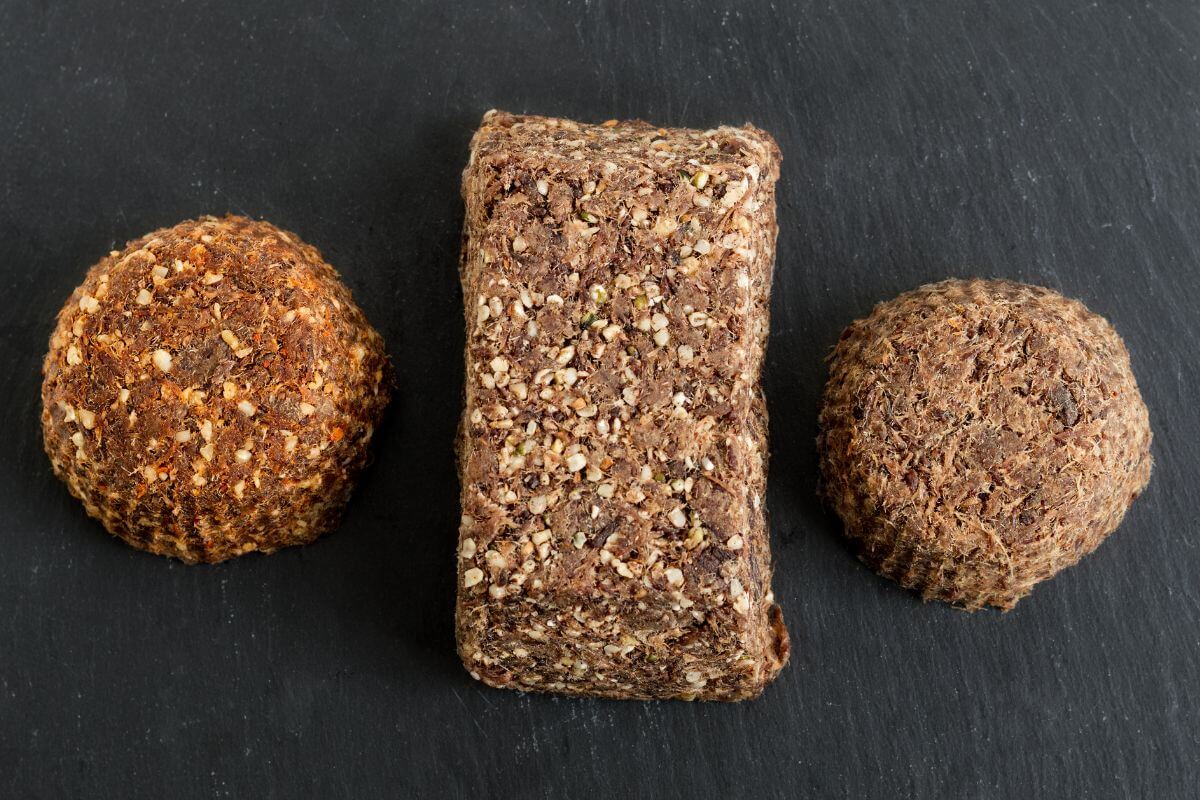
Montana’s early foodways were a vibrant tapestry of traditional practices and culinary customs.
The state’s first inhabitants, the Native Americans, relied on the bounty of the land for their sustenance. They hunted, gathered, and fished, finding nourishment in the rich resources around them.
The Native American diet included a variety of unique foods. Pemmican, a mixture of dried meat, fat, and berries, sustained them during long journeys.
Chokecherries provided a tart burst of flavor, while wild rice added a nutty texture to their meals.
But it was bison, filling the grasslands about 1,500 years ago, that became the lifeblood of Montana’s early inhabitants. These majestic animals not only provided an essential food source but also clothing and shelter.
Bison hunting was a central aspect of early Montana foodways.
Sometimes, communities worked together in large communal hunts, luring herds of bison over cliffs.
Early Montana Cooking Techniques and Ingredients
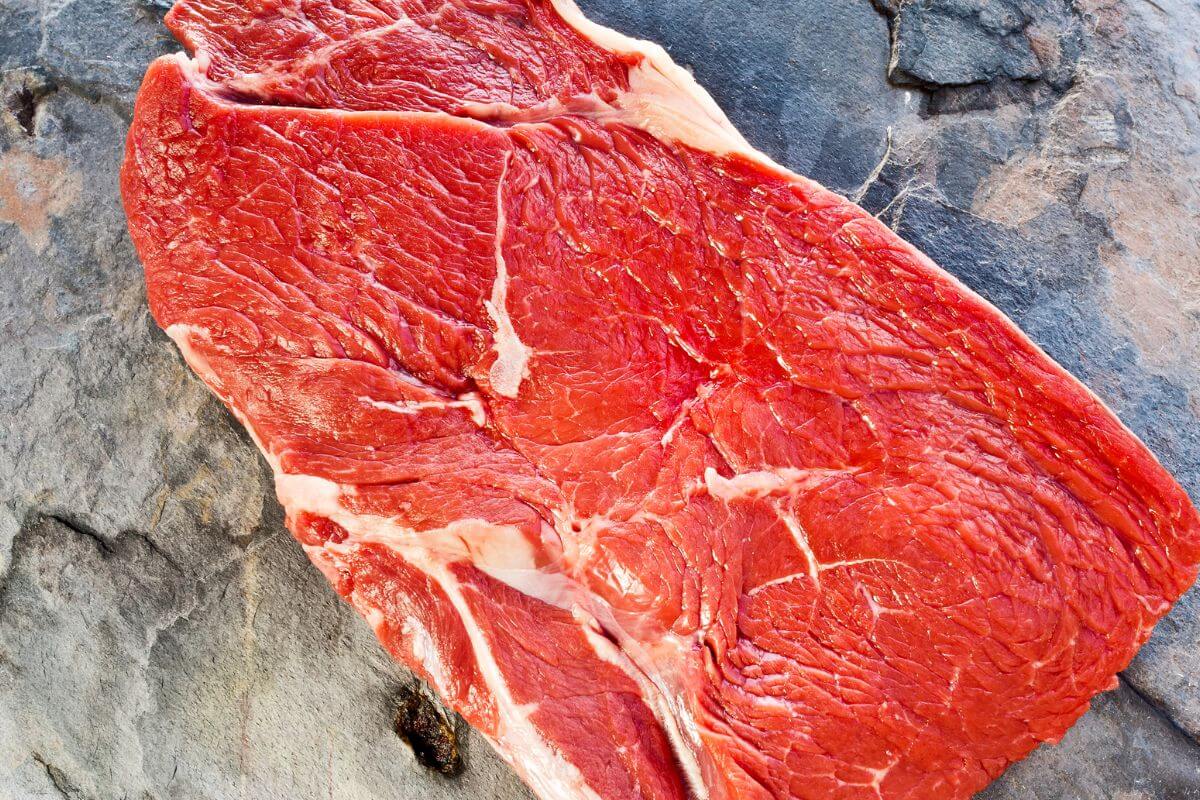
The Native Americans relied on the land’s bounty and utilized key ingredients like bison, wild game, fish, and foraged foods.
The early inhabitants of Montana employed various cooking techniques such as smoking, drying, pounding, grinding, roasting, grilling, boiling, stewing, and steaming to create flavorful and nourishing dishes.
With the arrival of European explorers, trappers, and miners, new items like flour, coffee, and canned goods were introduced to Montana.
Bison, once a staple for indigenous cultures, became a sought-after commodity for trading and was embraced by settlers.
Throughout the years, indigenous foods like huckleberries, chokecherries, and bison have maintained cultural significance, adding depth to Montana’s cuisine.
The early foodways of Montana emphasized locally sourced ingredients and sustainable practices, laying the foundation for modern culinary traditions while preserving cultural heritage.
Their stories and recipes have been passed down through generations, and immortalized in community cookbooks and heritage cookbooks.
Each dish carries a piece of Montana’s culinary story, a testament to the deep roots and enduring traditions that make this state’s iconic food culture truly iconic.
Fast forward to the present day, and Montana’s food culture continues to reflect its rich history.
Montana Settlers and Their Agricultural Impact
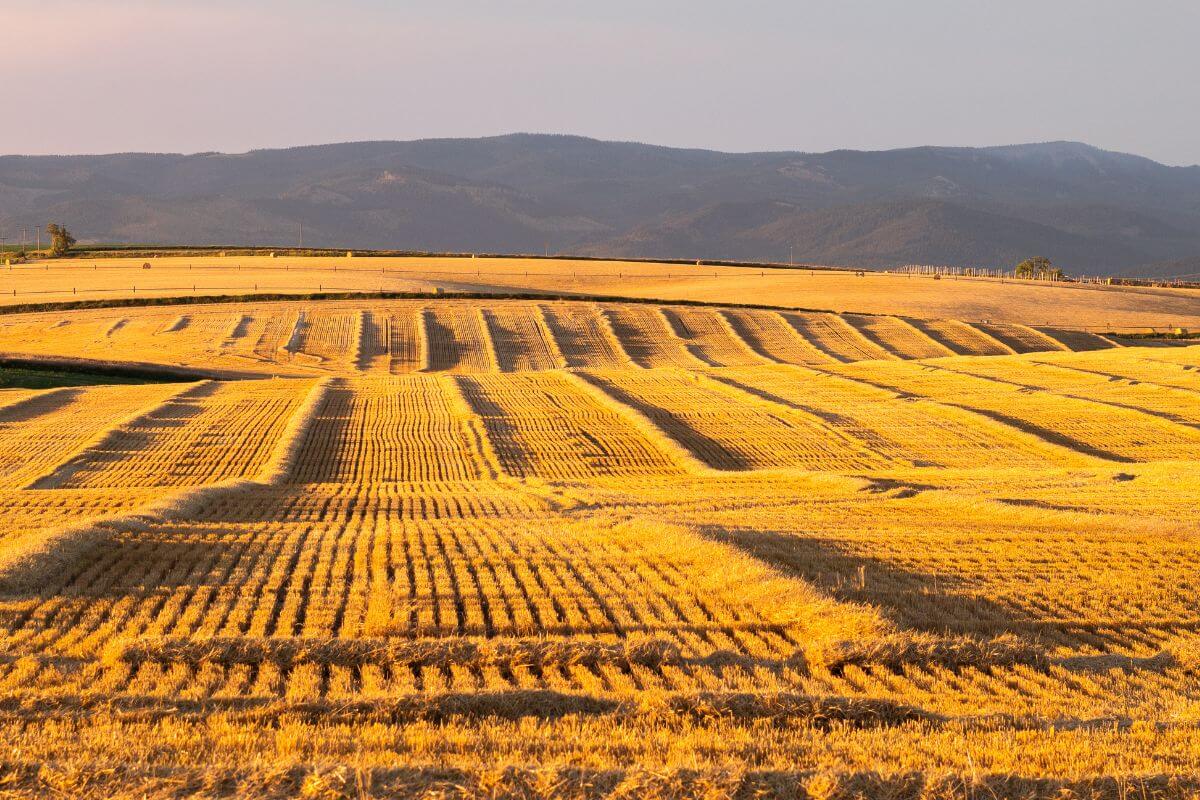
In Montana, the enactment of the Homestead Act in 1862 was one of the key moments in Montana’s past that brought a tidal wave of settlers, eager to cultivate and improve the land for a chance at ownership.
This influx of enterprising individuals brought with them their European traditions and a wealth of agricultural knowledge.
Montana’s fertile soil, abundant open spaces, and favorable climate made it an ideal location for farming and ranching. Wheat became a staple crop, and soon, Montana emerged as a leading wheat-producing region in the United States.
The settlers’ hard work and determination transformed the landscape, turning it into a vital agricultural hub.
As wheat production increased steadily, Montana’s culinary scene also evolved.
Traditional European dishes like the pasty, a savory pastry filled with meat and vegetables, became popular among the settlers.
These European culinary traditions blended with the local ingredients and flavors, creating a unique fusion of tastes.
To preserve their cultural heritage and culinary traditions, settlers documented their detailed recipes and food notes in heritage cookbooks.
These invaluable historical documents provide insights into the early Montana food scene and the techniques used by the settlers to create delicious meals from the bounty of the land.
The settlers’ agricultural impact on Montana cannot be overstated.
They turned the vast landscapes into flourishing farms, embracing the land’s potential and creating a strong foundation for the state’s culinary heritage.
Today, Montana continues to celebrate its rich agricultural history through food festivals and mouthwatering dishes.
Influence of Montana Mining and Railroads
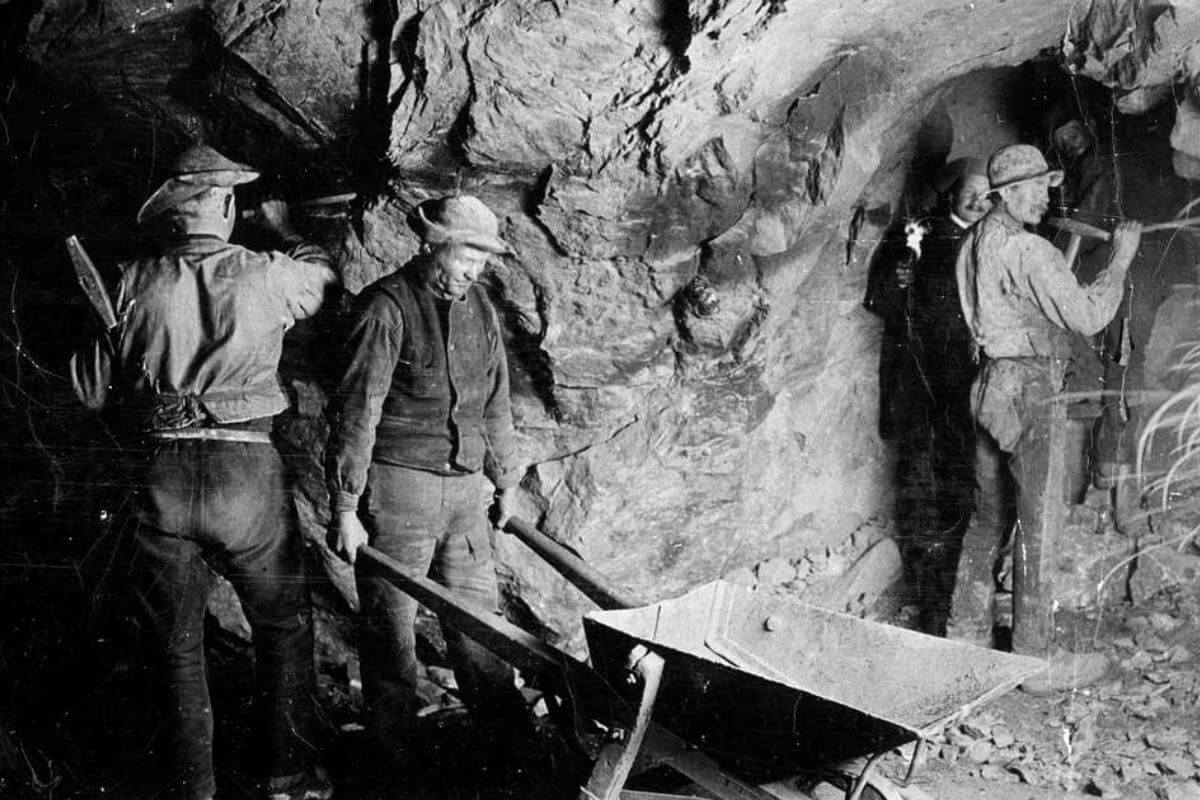
As people from all over the world flocked to the mining camps and railroad towns, they brought with them their own unique food traditions. This infusion of diverse cultures had a profound impact on Montana’s culinary landscape.
One iconic example of this influence is the Cornish pasty.
Believed to have originated from Cornish miners who arrived in Montana during the 19th century, the pasty quickly became a beloved food in the state of Montana.
This handheld meat and vegetable pie provided a hearty and portable meal for miners working long hours.
Railroads further contributed to the diversification of Montana’s cuisine.
With the ability to transport food from other parts of the country, the state saw an influx of dishes from various cultural backgrounds.
Italian immigrants, for instance, brought their love of pasta to Montana, resulting in the establishment of numerous Italian eateries throughout the state.
Today, places like Ciao Mambo, Lucca’s, and Bistro Enzo continue to delight locals and visitors alike with their authentic Italian flavors.
The influence of mining and railroads extended beyond the types of food consumed in Montana. These industries also impacted the way food was prepared and served.
The demanding work schedules in mining and railroad construction required quick and easy-to-prepare meals.
This demand led to the rise of fast and convenient foods, such as sandwiches, cold drinks, and preserved goods, which could be easily consumed during breaks and on the go.
To this day, the foods, traditions, and cultures introduced by the mining and railroad industries continue to shape Montana’s culinary scene.
Montana Culinary Tourism and Events
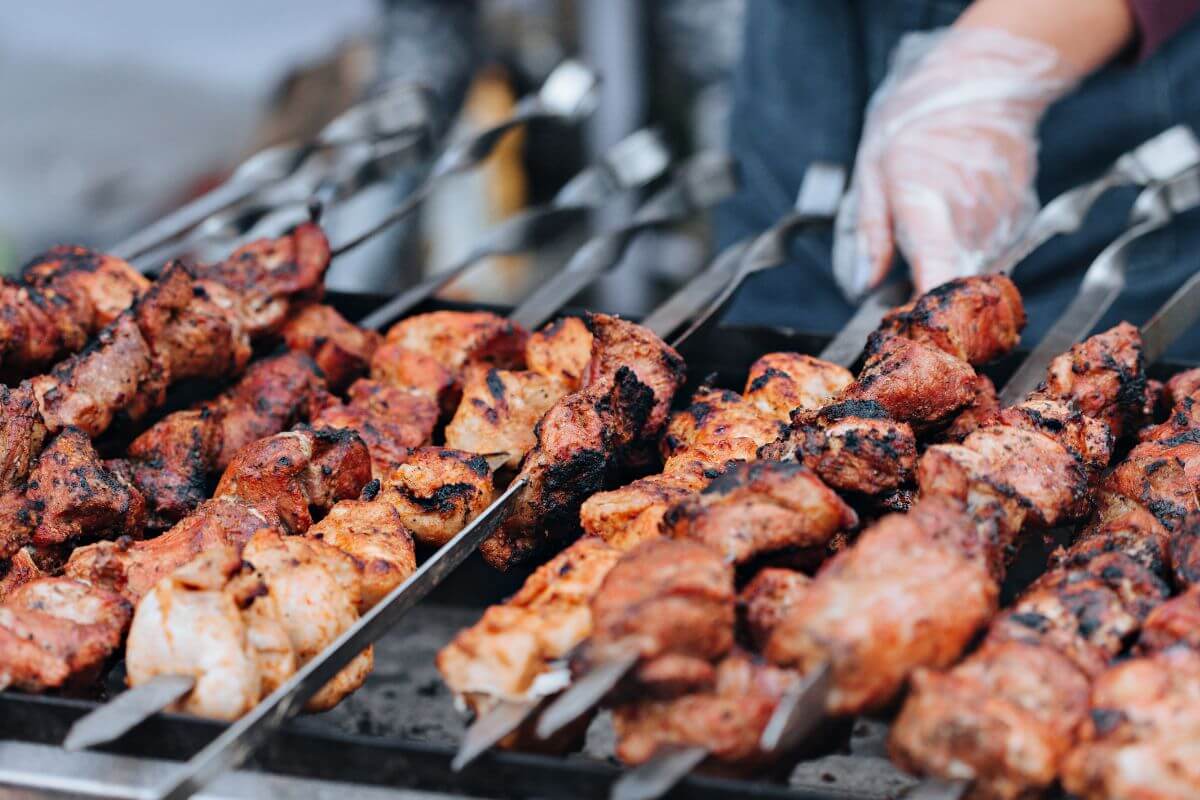
When it comes to Montana, culinary tourism is an exciting adventure that combines breathtaking landscapes with delicious flavors.
The state hosts a variety of food-related events that are sure to tantalize your taste buds and leave you craving more.
From various Montana food festivals such as the Montana Brews & BBQ in Yellowstone County to the Flathead Cherry Festival in Polson and the Flathead Food Truck Festival, there is something for everyone here in Big Sky Country.
These events are not only a treat for food enthusiasts, but they also play a significant role in preserving and promoting Montana’s culinary heritage.
By showcasing the use of locally sourced ingredients, these events support local farmers and producers, ensuring the continuation of traditional culinary practices.
Regional specialties like huckleberries, bison, and cherries take center stage, giving visitors a true taste of Montana.
Through culinary tourism, Montana’s unique gastronomic heritage shines, making it an unforgettable destination for food lovers.
The finest food festivals and exciting food scenes encourage visitors to explore the state’s diverse culinary offerings, supporting local economies and food-related businesses along the way.
Montana’s bounty yields exceptional food, and these events are the perfect opportunity to experience the delicious flavors that define this captivating state.
So, whether you embark on culinary tours or attend Montana’s finest food festivals, get ready to treat your senses to the rich flavors and cultural heritage that make Montana a culinary paradise.
12 Popular Foods in Montana Today

Montana, a place where the flavors of the Wild West and Mother Nature collide to create a culinary scene like no other.
Let me take you on a journey through popular foods that showcase the unique dishes and flavors that make Montana’s culinary scene stand out:
- Bison Burger – Juicy and flavorful bison meat makes for a delicious alternative to traditional beef burgers. Sink your teeth into a patty that boasts the essence of the open plains.
- Huckleberry Pie – Montana’s beloved wild huckleberries are the star of this sweet and tart dessert. Picture swirls of deep purple huckleberry goodness dancing on your taste buds.
- Rocky Mountain Oysters – Step right up for a taste of the wild side! These quirky delicacies are often served at fairs and festivals. Don’t knock it ’till you try it!
- Trout – Freshwater trout from Montana’s rivers and lakes is a catch of the day that seafood lovers can’t resist. Savor the delicate flavors and tender texture of this local favorite.
- Flathead Cherries – Sweet and succulent cherries grown in the Flathead Valley are a seasonal delight. Pop these ruby gems into your mouth and experience a burst of fruity goodness.
- Pasties – A legacy of Montana’s mining heritage, these savory turnovers are filled with meat, potatoes, and vegetables. Dig into a warm pasty and let the flavors transport you back in time.
- Elk Steak – Flavorful and lean elk meat is a popular choice for steaks and other hearty dishes. Indulge in the rich flavors of the wild with every bite.
- Chokecherry Jelly – Chokecherries are used to make delightful jellies and preserves with their unique tart flavor. Slather this sweet and tangy jelly on toast or biscuits for a taste sensation.
- Montana Craft Beer – The state’s thriving craft beer scene offers a variety of locally brewed beers with distinctive flavors. Sip on a cold one and experience the essence of Montana in every sip.
- Bison Chili – Hearty and rich chili made with bison meat is a soul-warming dish often enjoyed during colder months. Let the flavors of the West warm your heart and soul.
- Indian Fry Bread – A Native American-inspired treat, fry bread is deep-fried and often served with various toppings. Bite into this crispy, golden delight and experience a burst of flavor.
- Montana Beef – Known for its high-quality beef, the state’s cattle industry contributes to mouthwatering steaks and roasts. Delve into a juicy piece of Montana beef and taste the goodness.
These popular Montana foods exemplify the state’s connection to its natural resources, indigenous traditions, and contemporary culinary innovation.
Whether it’s the bounty of berries, the game meats, or the creative flavors infused within each dish, Montana’s culinary scene is sure to satisfy even the most discerning palate.
Montana’s Food History Final Thoughts
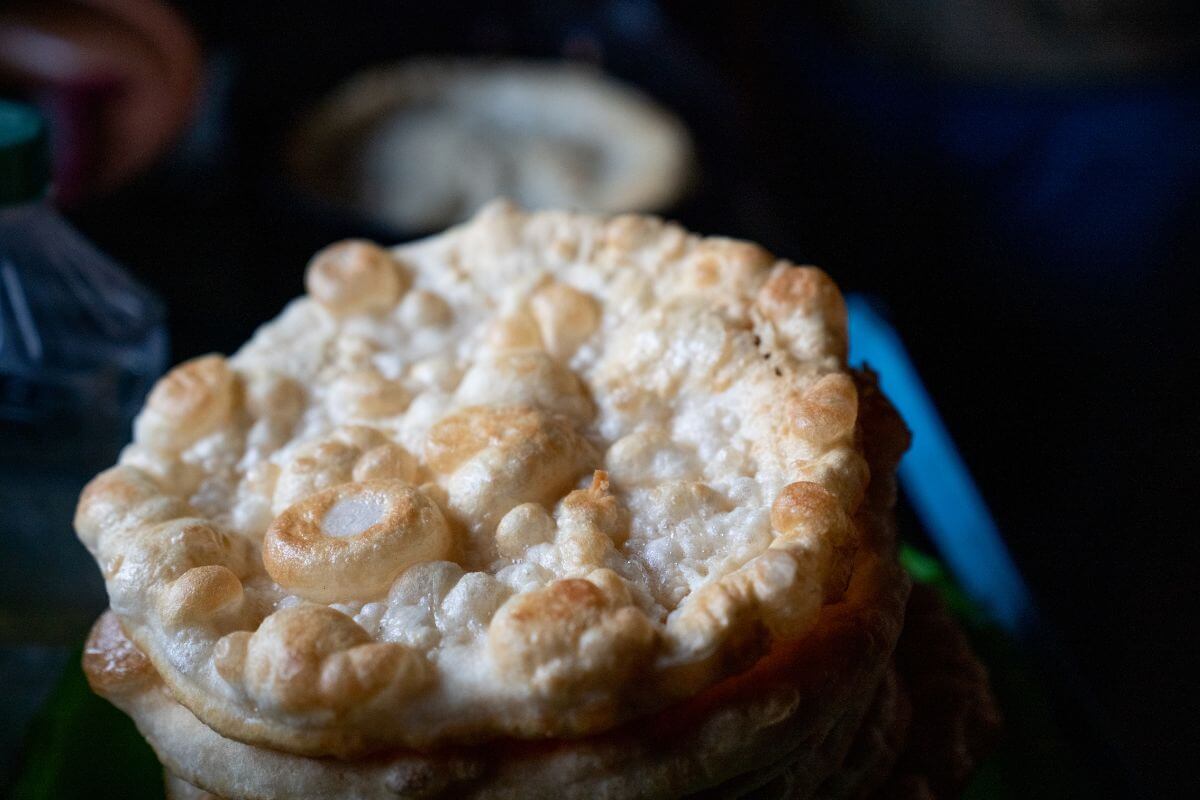
From the Native American influence showcased in Indian Fry Bread to the European traditions seen in pasties, Montana’s cuisine is a testament to the diverse cultures that have left their mark on this land.
Today, Montana’s culinary scene is experiencing a revitalization, with a renewed appreciation for the state’s rich history and the use of locally sourced ingredients.
Chefs are embracing the bounty of the land, working closely with farmers and ranchers to bring the freshest and most flavorful ingredients to the table.
This return to the roots of Montana’s culinary traditions is evident in the growing popularity of farmer’s markets and farm-to-table restaurants, where diners can taste the essence of the state’s bounty.
The creative flavors and classic dishes now found in the food choices across Montana pay homage to the past while embracing the exciting food scene of the present.
From the iconic and hearty bison burger to the delicate flavors of trout, each bite tells a story of the state’s history and the people who have called it home.
So, let us savor each delicious morsel and continue to celebrate the flavors that make Montana’s culinary heritage truly exceptional.
Montana’s Food History FAQs
1. What Food Product Is Montana Known For?
When you think of Montana, there are a few food products that immediately come to mind: bison burgers, huckleberry swirls, and Montana beef.
These unique dishes are synonymous with the state’s culinary offerings and highlight the distinct flavors and ingredients that make Montana’s food legacy so special.
These distinct food products are a testament to the state’s commitment to quality, taste, and a true appreciation for good food.
2. What Is the State Fruit of Montana?
Bursting with flavor and cherished by locals, huckleberries have earned the prestigious title of the State Fruit of Montana.
It was an enduring symbol of the state’s cultural importance, and it became official when House Bill 880 was signed into law by Governor Greg Gianforte on May 10, 2023.
3. What Crops Does Montana Grow?
With its fertile soil and favorable climate, Montana produces a diverse range of crops such as huckleberry, sugar beets, wheat, barley, and lentils.
The abundance of these crops has contributed to Montana’s reputation as an agricultural powerhouse.
Get to know the state of Montana better by reading these other articles:
- Montana’s Recent Presidential Guest
- Montana’s Seismic Tremors
- Montana Rocket Launch Sites
- Montana’s Lasting Influence
- https://mhs.mt.gov/education/Elementary/Chap2.pdf
- https://www.fs.usda.gov/detail/hlcnf/learning/?cid=stelprdb5373555
- https://flathead.mt.gov/county-calendar/calendar-event-detail/flathead-food-truck-festival
- https://www.archives.gov/milestone-documents/homestead-act
- https://garystockbridge617.getarchive.net/media/falu-kopparguva-borrning-i-gruvan-b80a5e

